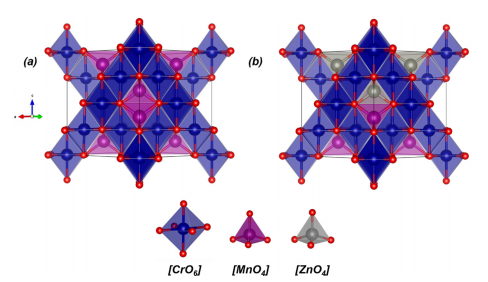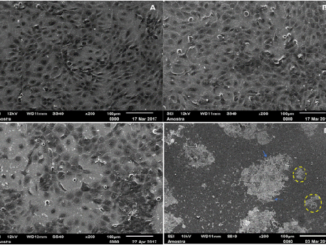
Structural, electronic, vibrational and magnetic properties of Zn2+ substituted MnCr2O4 nanoparticles
Abstract: In the present investigation, we report the structural, vibrational, electronic and magnetic properties of Mn0.5Zn0.5Cr2O4 nanoparticles fabricated by the solution combustion method and complemented by Density Functional theory (DFT) calculations. X-ray diffraction (XRD), Neutron diffraction, X-ray photoelectron spectroscopy and Raman analysis confirms the formation of single-phase with spinel cubic structure. The average crystallite size was found to be 8 nm. The theoretical calculations suggest that Zn-doping on the MnCr2O4 matrix induces a unit cell contraction associated with structural distortions along both [AO4] (A = Mn, Zn) and [CrO6] clusters, in agreement with the experimental evidence. These structural distortions contribute to narrowing the band-gap of Mn0.5Zn0.5Cr2O4 from disturbed energy levels in the vicinity of Fermi level. Field dependent magnetization confirms that the samples exhibit paramagnetic nature at 300 K and antiferromagnetic nature at 3 K. In the theoretical context, the exchange coupling constant for pure and Zn2+ substituted MnCr2O4 materials were calculated confirming the dominant antiferromagnetic character of Cr-Cr interactions. The temperature dependent susceptibility reveals that the magnetic transition from paramagnetic phase to antiferromagnetic phase occurs at 19 K (TN). The spin frustration factor of Mn0.5Zn0.5Cr2O4 is found to be 22 K. Hence, our experimental and theoretical result suggests that synthesized materials are useful for low and high frequency applications.
Author(s): Manjunatha, K; Angadi, VJ; Ribeiro, RAP; Longo, E; Oliveira, MC; Bomio, MRD; Lázaro, SR; Matteppanavar, S; Rayaprol, S; Babu, PD; Pasha, M
Journal of Magnetism and Magnetic Materials
Published: 15 May 2020, Volume 502




